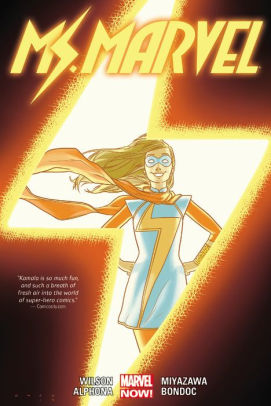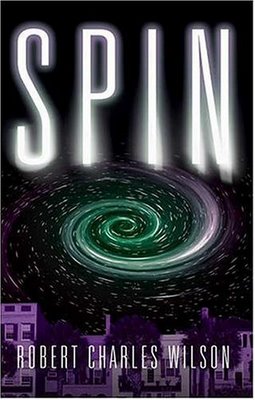Character Creation: ICONS
ICONS is the second superhero roleplaying game from Mutants & Masterminds creator Steve Kenson. ICONS is loosely based on FATE and so is a rules light game. It differs from FATE in that it relies more on numbers and actually simplifies the concepts of descriptors and Aspects. Character creations is hugely different as well.
ICONS uses randomized character creation and very little is actually controlled by the player. This character creation example will be using the original rulebook from 2010, but know that a updated edition called ICONS: The Assembled Edition was released in 2014. This new edition, as far as I understand it, corrects a few rules and includes some material from previously released supplements. I don’t know if character creation is the same process in the two editions, but the original rulebook is the one I have.
Character creation is a simple 7-step process. We will either roll 2d6 or 1d6 & 1d6 and looking up results on tables in the rulebook. I have no clear concept of what my superhero will be like. That would probably be moot anyway due to the random nature of the creation.
So, let’s see if we can get my superhero off the ground shall we?
Phase 1: Origin.
I roll 2d6 and get an 8. Checking the Origin-table on page 10 I see that the character’s powers is a «Gimmick». This means that my character will rely on items and devices as the source of his/hers powers. I also get to choose one mental ability to increase by +2. I will get back to that.
Phase 2: Abilities.
There are six abilities in ICONS. The book calls for separate 2d6 rolls for each of these. The result is compared to the Level Determination-table on page 11. Let’s do it! The abilities (and my Level in each) are:
Prowess: 4
Coordination: 8
Strength: 4
Intellect: 5
Awareness: 3
Willpower: 6
Whew! I rolled really well! The rulebook allows for swapping two abilities, but since I still have no real concept for this character I will need to take a moment to consider what I really got. As rolled I can see that this character is not overly strong, nor perceptive or very good in close combat. On the other hand I will be extremely proficient in ranged combat and dodging. That is pretty handy. My smarts and sheer force of will is pretty good as well. I kind of like this and decide not to swap any abilities. I still have my +2 increase to add to any mental ability, but won’t do that yet.
Phase 3: Powers.
This is the real meat, and what will make my character spring to life. Spider-man wouldn’t be Spider-man without sticky webs and spider sense, right? I know that my powers stems from gimmicky devices, so let’s see what the dice say about these powers. First I need to roll on a table on page 11 to calculate how many powers I got. I rolled 2d6 and got the total of 6. Looking at the table it tells me that I now have 3 powers. I’m guessing that is quite average when it comes to superpowered beings. Not bad, but not quite The God of Thunder either. Now I need to roll on quite a lot of tables to discover my awesome new powers. I’ll do them one at a time.
First I need to roll to discover my first power’s Power Type. Rolling 2d6 and comparing the result on the Power Type-table on page 12 I get a total of 8 and see that my first power is Movement. Now I need to narrow down what this Movement really do. Rolling on the appropriate table on page 13 I discover that my movement-power is Swinging. OK, that was not as awesome as I thought it would be, but it could still come together quite nicely. Swinging feels like poor man’s flying to me, but using a rope/line I can also pull things towards me. That could be a plus. I roll on Level Determination-table to find the power level of my Swinging. I roll a 9 and assign level 6 to Swinging. On to the next power.
Ah! This is better! I roll 10 and get one Offensive power. I feel ready to kick butts! Smelly villain butts. Rolling on the Offensive-table I discover that my Offensive power is Strike. Another letdown! I was really hoping for some kind of long-ranged option here, but it seems I’m determined to roll a barely coherent mishmash of abilities and powers. My Strike level is 4, so I’m not very good at it either.
Last chance to make this character a force to be reckoned with. My last Power Type will be Control. That could be cool! Let’s see what it does. I get Elemental Control! Now we are talking. Rolling on the appropriate tables for Elemental Control I discover that my Elemental power is Air Control. The rulebook states that I can choose two effects of this power and since I still feel like I’m not up to standard in a combat situation I opt for both Attacking and Defending with this power. Rolling for my Power Level I get a 9, which corresponds to a Air Control power of 6.
Phase 4: Specialties.
That last power made me able to create a hero around the concept of Air. We will see how it all will fit together later on, but right now we must roll for something called Specialties. Rolling pretty average I get a total of 2 Specialties. Let’s see what that is. Reading on I understand Specialties as a way to specialize on an area thereby giving bonuses to abilities when performing that Specialty. So far I have wanted to get basic powers that will help me in a fight or purely physical situations. I look at my abilities and find that I will place my +2 increased ability points in Intellect raising it to a total of 7. I then choose Electronics and Mechanics for my Specialties. This will give me +1 bonus whenever performing actions within these fields of expertise. Given that I’m reliant on devices and tools to use my powers I’m guessing that this will be quite handy, and also a natural fit for my character.
Phase 5: Stamina & Background.
Calculating my Stamina by adding Strength (4) with Willpower (6) I get a total Stamina of 10. When it comes to background I need to say something about who my character is and how he came to posess such mediocre superpowers. I decide to go with a Peter Parkerish type of character. Marcus Moll is therefor a young electronics engineer who discovers that his well regarded father is secretly the super villain Typhoon. Following his father to his super secret and totally evil mountaintop lair Marcus inadvertently disturbs one of Typhoon’s dangerous experiments thereby killing (probably…) his father and saving thousands of innocent lives. Being curious and morally obliged Marcus continues his father’s research to right his many wrongs. He obtains and eventually improves on some of Typhoon’s air- and wind-controlling devices. Marcus’ superhero alias is known as Windling, and he has built some really awesome bracers that propel powerful and highly concentrated winds that can be used for Swinging (push/pull, but not flying). His Strike power also stems from these bracers and can be used in close combat as a bashing attack to push the air quickly out of the lungs of an opponent. His Elemental Control-power (Air Control) consists of a belt that when activated acts as a Force Field and a self-built Cyclone Gun that shoots air like a Blasting attack. Windlings getup is of course light blue and cloudy white spandex, with a helmet shaped like a reversed tornado. The bracers, gun and belt are made of glimmering blue metal.
Phase 6: Determination.
Subtracting Windling’s number of powers from 6 he gets a starting Determination of 3. The rules state that each character needs to choose 1 to 5 qualities and challenges. These can ultimately effect Determination. Quality #1: Catchphrase – “I’m a breath of fresh air!” Quality #2: Identity – electronics engineer working for huge company Quality #3: Motivation – Right my father’s wrongs! Challenge #1: Enemy – Is Typhoon really dead? Challenge #2: Personal – Lonely and insecure Challenge #3: Weakness – Claustrophobic.
Phase 7: Game Master Approval.
Yeah, we will skip this.
I really like ICONS’ character creation, and must admit that I’m especially fond of the randomization here. It makes for some odd results sometimes, but the idea that you describe the trappings of your powers will usually bring it all together. Character creation is fairly quick and can actually be done without reading most of the rules. I would have liked the process even better if the layout had been following the process. As it is now there is a lot of flipping back and forth to check abilities, powers, specialties and aspects, but that is really the only downside to this easy character creation. I am actually quite excited for my Windling-character and that must mean something.
#charactercreation #ICONS #RPG


